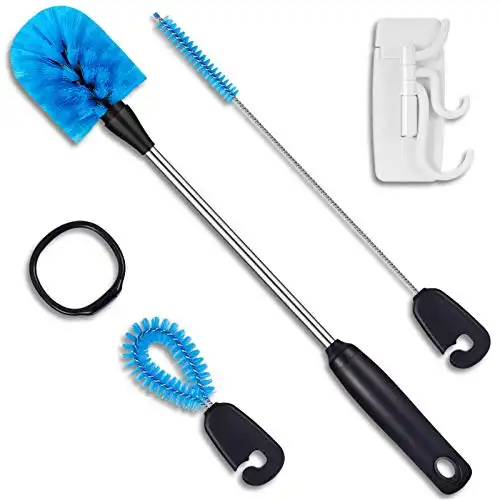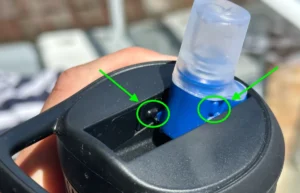I’ve owned one of my RTIC tumbler's for over 7 years now (and it's still going strong) and I have some newer ones as well.
I mostly use my tumblers to help me drink more water each day but I also use them for tea and coffee. Sometimes I'll even take them on a picnic with my kids and we'll use them for soda like lemonade or Coke. But is this actually safe?
Is it safe to put carbonated drinks in RTIC tumblers or bottles or will it somehow damage them or cause the metal to leach into my drink?
RTIC advises that you can put carbonated drinks in your tumbler or bottle for short periods and (thanks to the airtight seal and vacuum insulation) your soda will keep its temperature and fizz for your trip. Strongly flavored sodas may leave a noticeable taste in your tumbler when you fill the bottle with water afterward.
However, even though the 18/8 (food-grade) stainless steel and double insulated wall protect the bottle from the citric acid and carbon dioxide gas found in soda, prolonged exposure can lead to corrosion.
RTIC tumblers and bottles have unique features that make them suitable for keeping carbonated drinks fizzy and cool, but proper care must be taken to avoid rust and corrosion.
What Are the Risks of Putting Carbonated Drinks in a RTIC Stainless Steel Tumbler
Carbonated drinks have a bad rap for causing dental corrosion over time. Have you seen what Coke can do to rust?
Being concerned about pouring carbonated drinks into your RTIC tumbler or bottle is understandable.
There are a few logical concerns that people (including myself) have:
Rust, Corrosion or Chemical Leaching
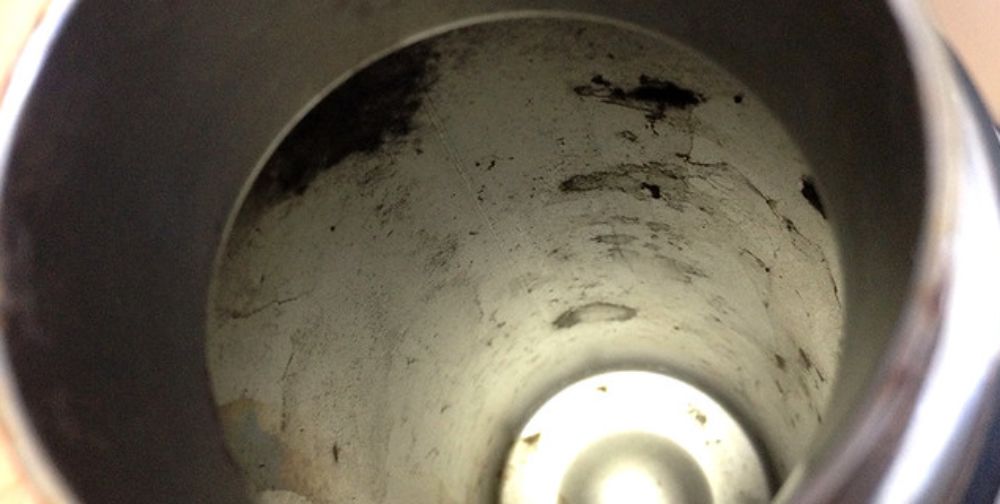
The biggest issue I think about when putting carbonated drinks in my RTIC tumbler is whether or not the carbonation or the sugars or acid or whatever in my soda, beer or sparkling wine is going to have any negative effect on the metal.
When I looked into whether Yeti or other stainless steel cups or bottles could cause cancer (they don't from what I can deduce from the research) I discovered that some chemicals from the stainless steel could end up in our drinks from tumblers or bottles. But I personally don't see this as a huge threat to my health, not compared to plastic leaching anyway.
This study states that “Stainless (steel) is readily attacked by organic acids, particularly at cooking temperatures; hence iron, chromium and nickel should be released from the material into the food”.
So it is plausible that some nickel, chromium and iron could be leached into your beverage when using an RTIC tumbler or bottle. This is especially true if the carbonated drink it quite acidic (eg. lemonade or containing lemon juice).
While carbonated drinks don't seem to rust or corrode the stainless steel RTIC tumblers or bottles in a noticeable way they may increase the occurrence and severity of chemical leaching from the bottle into your drink when compared to water. However, no studies yet have specifically been done on this issue.
There is a comment in a metal working thread that is apparently from Robert Seals (not verified) who started Klean Kanteen. He says:
A. I am Robert Seals the inventor of Klean Kanteen which started the stainless vs plastic revolution; I sold the company years ago. I had the bottles tested back then because as a metal worker I was concerned about electropolishing, which I did not trust. Using an acid equivalent to lemon juice it was found to leach nickel over the acceptable amount allowed by FDA standards. I was concerned enough to print FOR WATER ONLY on the bottles as the same tests showed no detectable metal when water was used.
Electro polishing is not the way to passivate any food container. The old fashioned polishing method is by far is the best way to seal the metal but it's too labor intensive for production. The public is being duped on this one. Robert Seals
I have also received emails from Robert Seals (again not verified) and he seems quite concerned about this issue. If there are further updates or studies on this issue I will post details about it either here or in a future article.
This test was done with an equivalent of lemon juice which has a pH of 2-3, making it 10,000 to 100,000 times more acidic than water. Lemonade is said to have a similar pH level and coke a pH of around 2.6-2.7.
Beer is even more acidic with the average lager being around 4.2-.4.6 in pH.
So if what Robert Seals says is true then yes, it's possible that chemical leaching above that allowed by FDA standards could be happening.
However, even if leaching does happen when using carbonated drinks my research into chromium and nickel seem to indicate no huge health threats when consumed orally. Chromium is actually an essential nutrient.
If you want to be 100% safe and minimize chemical leaching then I would advise that you only use water in your RTIC tumblers and bottles.
If you do use carbonated drinks in your bottle don't do it regularly, don't leave the drinks in there for long and give your bottles a really good clean afterwards before placing water back in it.
Wear and Tear on the Seal
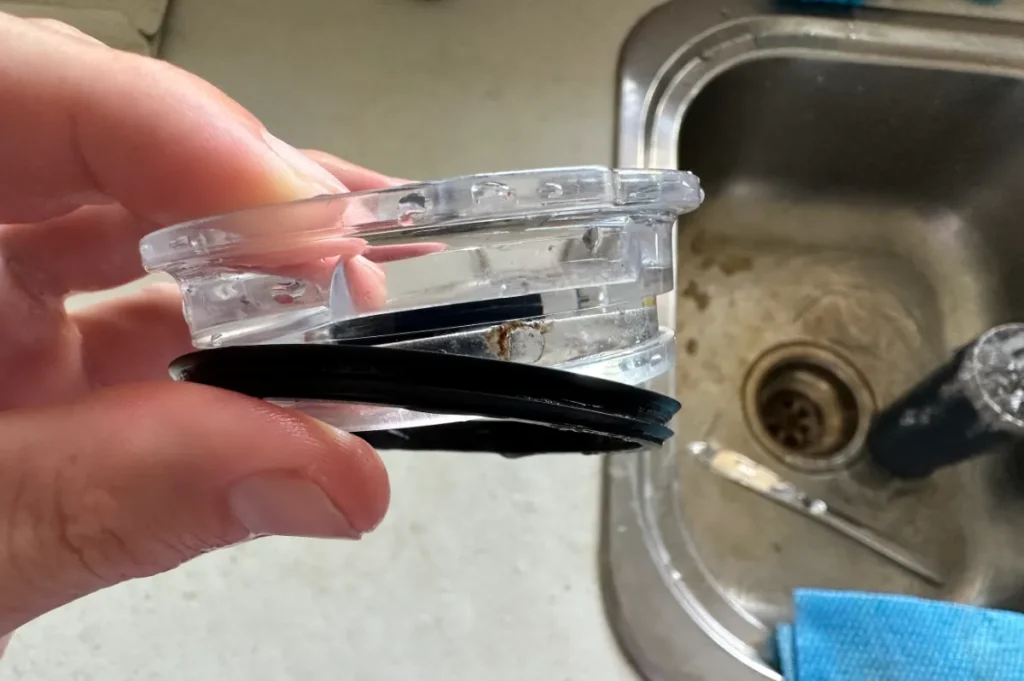
Carbonated drinks contain high levels of sugar and citric acid, which over time, can cause damage to the seal. Unfortunately, when a seal is damaged, it leads to leaking and your soda loses its fizziness, not to mention messing up your backpack.
RTIC has a good-quality, heavy-duty, air-tight seal that locks in your beverage’s cold and keeps it fizzy.
To keep the rubber seal in good condition, you need to rinse the tumbler and gently scrub the seal with a bottle brush (I like this 3-in-1 bottle brush to clean my bottles), soapy water, and a small amount of baking soda.
Three tools in one. Includes a long bottle brush, straw brush and detail cleaner (great for cleaning inside lid gaskets). Comes with organizer ring and storage hook,
However, if the damage has already been done, you can always replace the corroded seal with a new one. You can get these replacement gasket for RTIC tumblers at Amazon.
The damaged seal is easily peeled off, and the new one fits perfectly.
If your gasket is leaking, old, worn, loose or damaged then replace it with these high-quality rubber gaskets specifically designed to fit popular brands of tumblers like Yeti, RTIC, Beach and Ozark Trail.
Available in multiple sizes.
Residue Build-Up
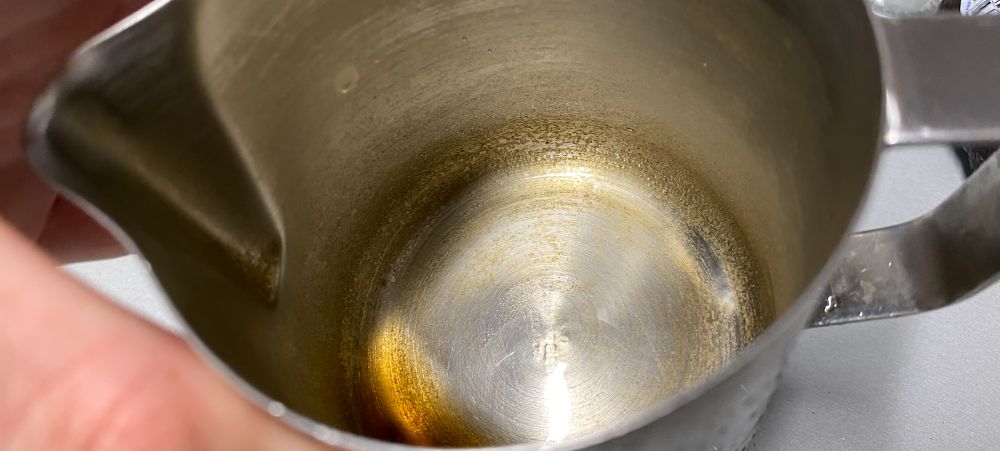
I recently forgot to wash my tumbler with warm soapy water (I had old smoothie in there for about 3-4 days) and didn't scrub the inside properly.
Even when I just use water only in my tumbler after a little while I start to notice a bit of discoloration and a slimy substance on the inside of my tumbler.
However, there are some great ways to clean the inside of bottles to get them completely clean and free of grime/buildup.
I like using either dry rice and some soapy water or ice and rock salt and shaking it vigorously to clean the inside of my bottle. This can also help clean cloudiness from your bottle, but you're unlikely to see that with stainless steel bottles.
If you intend to often put carbonated drinks in your tumbler, clean it properly and regularly to avoid residue build-up and corrosion.
As tempting as it may be, don’t put your RTIC tumbler in the dishwasher as the heat of the wash cycle will damage the vacuum seal.


